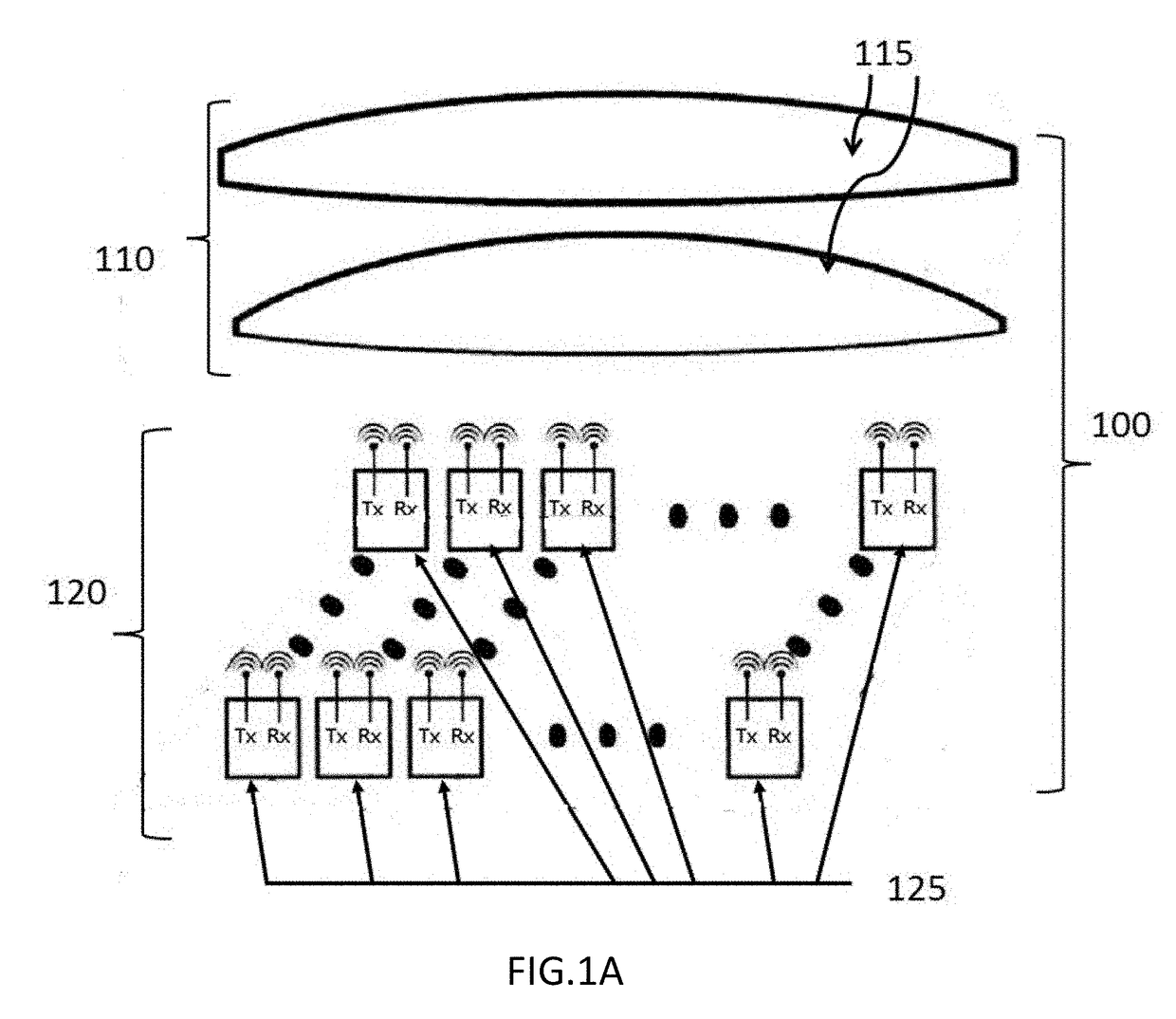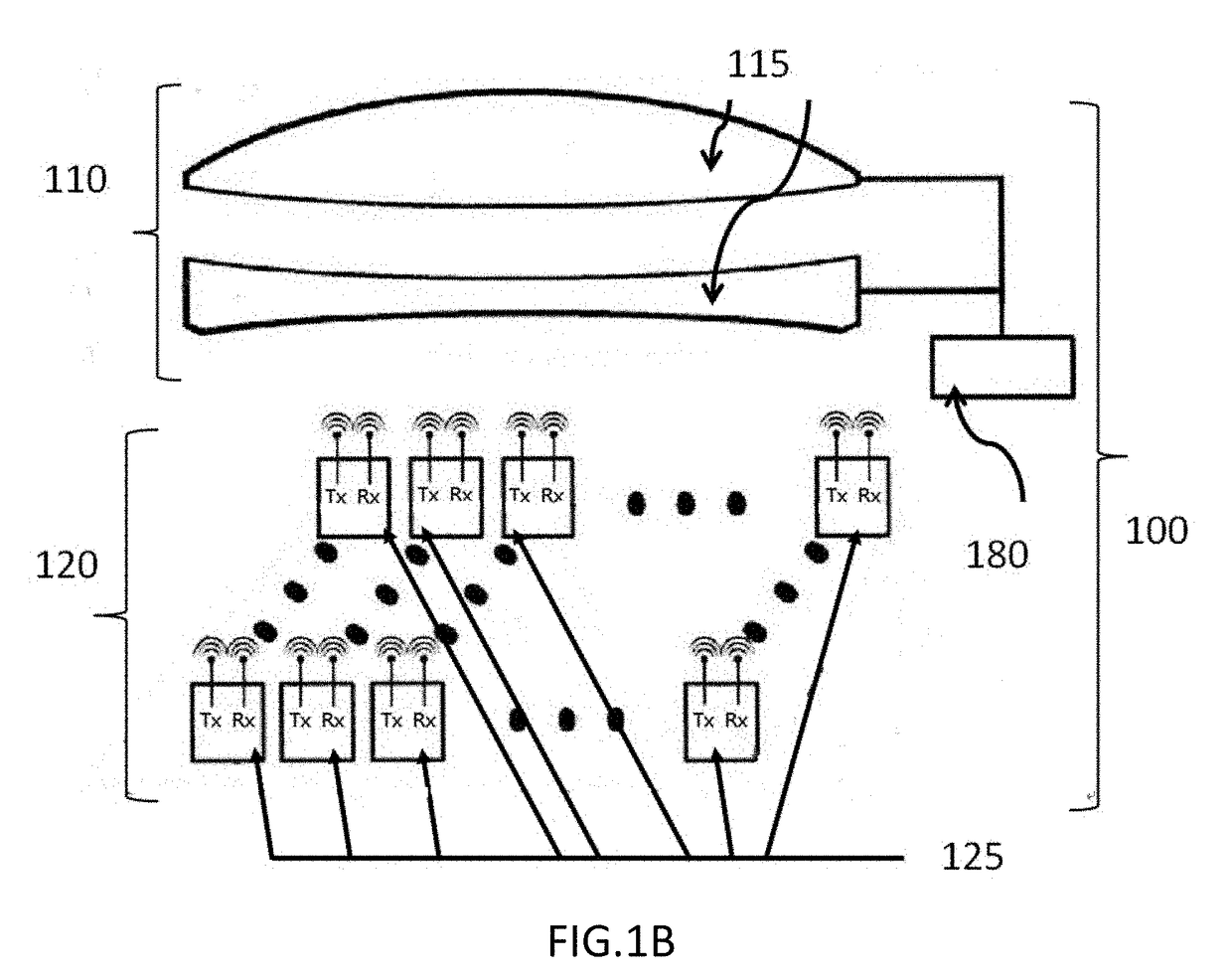Retro-directive Quasi-Optical System
- Summary
- Abstract
- Description
- Claims
- Application Information
AI Technical Summary
Benefits of technology
Problems solved by technology
Method used
Image
Examples
Embodiment Construction
[0015]The invention, as shown in FIG. 1A, is related to a retro-directive quasi-optical system 100 that includes at least a lens set 110 and a pixel array 120, wherein a two-dimensional array resides on a two-dimensional surface is present as an example. The pixel array 120 sets the resolution of the quasi-optical system. The lens set 110 has one or more lens 115, and the pixel array 120 has some pixels 125 wherein each pixel is composed of one or more transmitter (Tx) antennas and one or more receiver (Rx) antennas, which define the locations where EM wave are transmitted and received, and the physical size of each pixel may be defined as the area enclosed by the Tx and Rx antennas. One or more transmitters are connected to the Tx antenna(s) and convert the electrical signals to the outgoing EM waves, and one or more receivers are connected to the Rx antenna(s) and convert the incoming EM waves into the electrical signals. Also, the Tx and Rx may include other circuit elements, suc...
PUM
 Login to View More
Login to View More Abstract
Description
Claims
Application Information
 Login to View More
Login to View More - R&D
- Intellectual Property
- Life Sciences
- Materials
- Tech Scout
- Unparalleled Data Quality
- Higher Quality Content
- 60% Fewer Hallucinations
Browse by: Latest US Patents, China's latest patents, Technical Efficacy Thesaurus, Application Domain, Technology Topic, Popular Technical Reports.
© 2025 PatSnap. All rights reserved.Legal|Privacy policy|Modern Slavery Act Transparency Statement|Sitemap|About US| Contact US: help@patsnap.com



